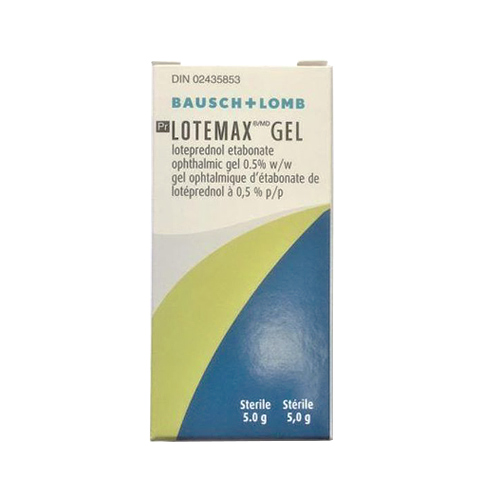What is Lotemax (Loteprednol Etabonate) Ophthalmic Gel?
Lotemax Gel is used to treat swelling of the eye and discomfort after cataract surgery and to manage diseases of the cornea. It is classified as a corticosteroid and it reduces redness, swelling, Itching and infection of the eye experienced during after eye surgery. If you are not sure why you are prescribed Lotemax, contact your doctor to find out why. It is helpful to be informed on your specific condition.

Lotemax (Loteprednol Etabonate) Ophthalmic Gel Information
How to Use Lotemax Gel?
When discussing this with your doctor, they ought to explain how to use Lotemax gel and may even provide a demonstration for your initial prescription and renewals. The packaging also includes a drug information sheet.
If you are unclear how to apply this medication or how often, contact your doctor or pharmacist as proper use provides the best results. The most common use is 1-2 drops in the affected eye 4 times daily.
If you wear contact lenses, remove them before applying your dose and keep them off for 15 minutes after your dose. Soft contact lenses may absorb the medication. Always wash your hands prior to using it to avoid contamination. Do not let the tip of the tube touch the eye, fingers or other surfaces as well.
If you are taking other medications wait 15 minutes between doses to make sure they do not interact or interfere. If you miss your dose, disregard it and take your next one on schedule. Do not take a double dose hoping to catch up. Taking too much Lotemax Gel does not improve your condition and can lead to more frequent or severe side effects.
Prolonged use of corticosteroids can result in glaucoma and reduced visual acuity and fields of vision. Stop taking Lotemax when advised by your doctor.
Do not provide this medication to others and individuals who have not consulted with their doctor. They may experience unpleasant side effects and this medication may not be a relevant solution for their condition.
If you begin to feel better and your symptoms improve, keep taking lotemax until instructed otherwise by your doctor. Your symptoms can return if treatment ends prematurely.
What are Side Effects of Lotemax Gel?
Lotemax has known side effects. This is not a complete list and includes frequently reported adverse events. Report side effects to your doctor or pharmacist if they are severe or you need help managing them.
- runny nose
- itching
- redness or swelling of the eye
- headache
- Blurred vision or other change in vision
- thinning of the cornea
- nausea
- discharge from the eye
- eye discomfort, irritation, or pain
- slow wound healing
- redness of the eyelid or inner lining of the eyelid
- tiny bumps on the inner lining of the eyelid
- dry eyes
- Burning feeling when medicine is applied
- Blindness
- vomiting
- tearing
- Decreased vision
- gradual blurring or loss of vision
- sore throat
- sensitivity of the eyes to light
- swelling of the membrane covering the white part of the eye
- feeling of something in the eye
- loss of vision
Lotemax Ophthalmic Gel Drug Interactions?
It is important to disclose all your current medications with your doctor to prevent allergic reactions or adverse interactions. They may have to make a decision if the interaction is worth the benefit of using either drug or if your therapeutic regime needs to be changed. Your doctor or pharmacist can advise you if anything you take interacts with Lotemax
- Bemiparin
- Nadroparin
- Desmopressin
- Macimorelin
- Sargramostim
- Lutetium Lu 177 Dotatate
- Auranofin
Lotemax (Loteprednol Etabonate) Ophthalmic Gel Coupon

